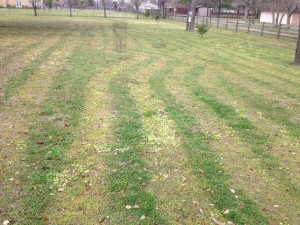By Stephen Janak
County Extension Agent – Ag/NR
Colorado County
The weather pattern “El Nino” has brought us some early spring rains that have filled the soil profile, recharged groundwater, and filled stock tanks. The outlook for a productive spring looks promising as wildflowers begin to peak out, and many of us are itching to get into the garden or start yard work. Here are a few helpful tips to ensure positive results of your work, to help us all to be better stewards of the land, and to protect the natural resources that we rely on:
Before choosing to fertilize your lawn or pastures, it is always a good investment to have a soil test done. Choosing to fertilize without soil test results is a good way to potentially throw money away or pollute the environment. Your soil might not need fertilizer, or may be too acidic and require the application of lime to correct the pH. Soils with low pH do not respond to nitrogen fertilization, thus any application of fertilizer may be a futile endeavor. Additionally, applying fertilizer to soils that already have adequate nutrients for lawn or pasture growth only makes the grass more susceptible to disease, requires more frequent mowing, and increases the potential for contamination of groundwater through nutrient leaching. Finally, do not apply fertilizer to saturated soils, before threat of a big rain storm, or close to the curb or driveway. Applying to saturated soils or before heavy rains increases the chance for runoff leading to water pollution, and slinging fertilizer over the curb guarantees water pollution as the nutrients are washed directly into storm drains.
Choosing to use herbicides can be safe and effective if the directions on the label are followed and application equipment is calibrated. It is easy to ignore that lengthy label with the small print, but it has details that are essential for success. Additionally, it is a violation of Federal Law to use a product in a manner inconsistent with its labeling. Pay close attention to recommended application rates, re-entry restrictions, and application methods. If the application rate is expressed on a “per acre” basis, the sprayer will need to be calibrated. We have guidelines for hand sprayer calibration at the office. Most herbicides recommend the use of a good surfactant at a rate of 0.25% to 0.5% of volume to help the product stick to waxy leaf surfaces. This equates to about 0.5 ounces per gallon of spray. Finally, if using a boom sprayer, check to make sure it is set at the correct height and nozzle spacing so that the spray patterns from each nozzle overlap one another. Failure to do so can result in streaking and incomplete coverage. For more help, call me at 979-732-2082, email stephen.janak@ag.tamu.edu, or come by the office.
Boom sprayer set too low results in incomplete coverage/streaking.
Photos are from my cousin, used with his permission. Ill leave it up to you to choose the best one.



